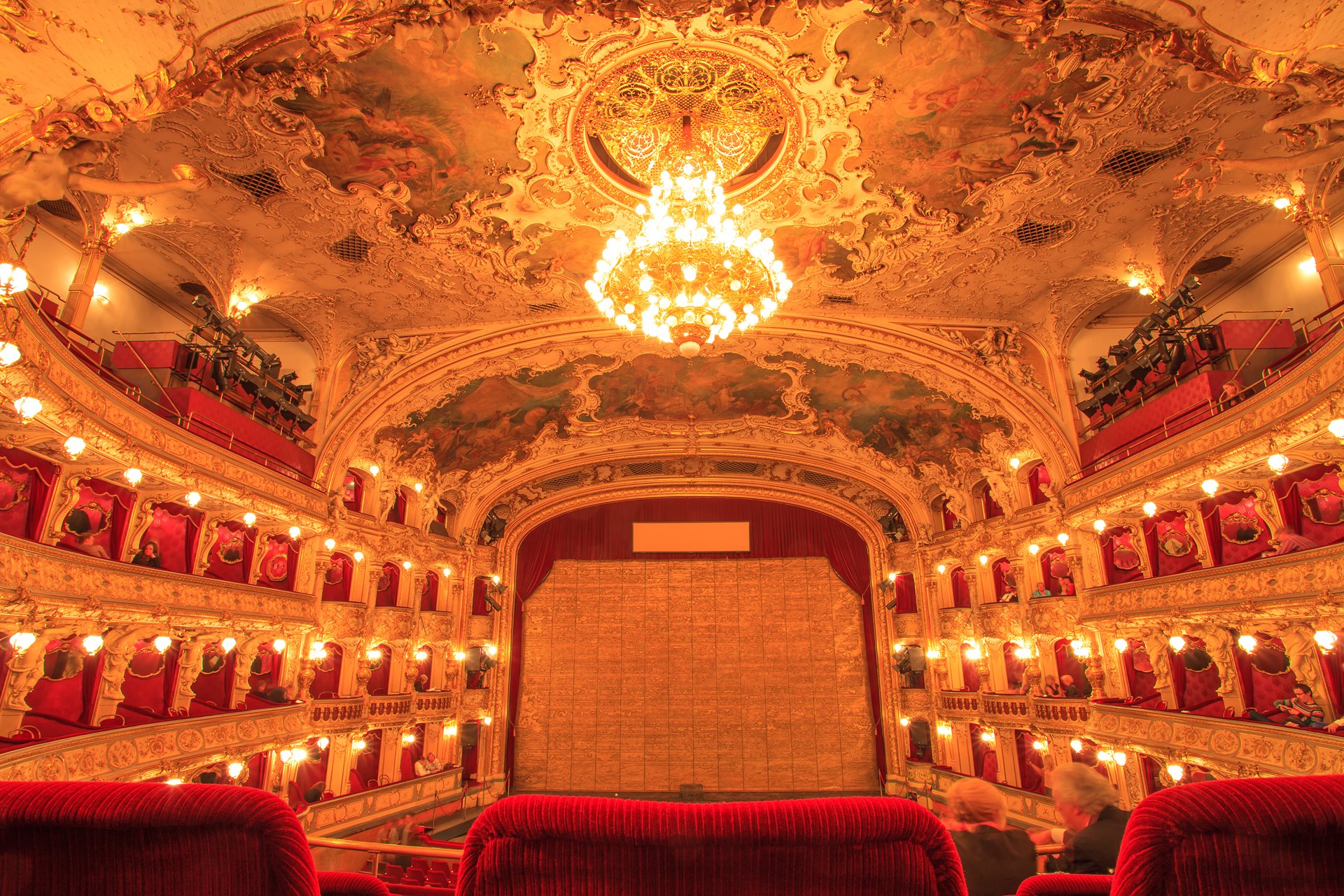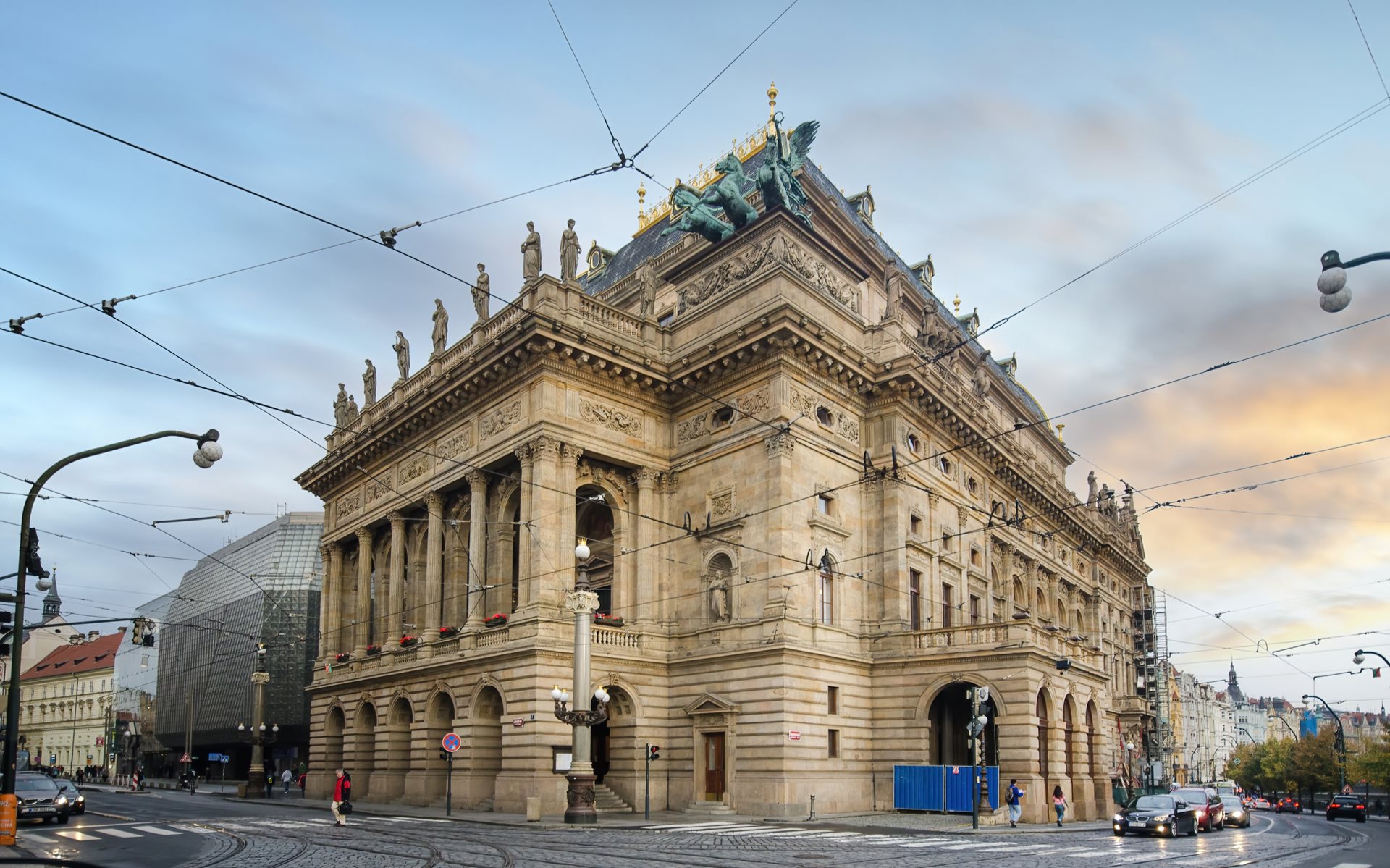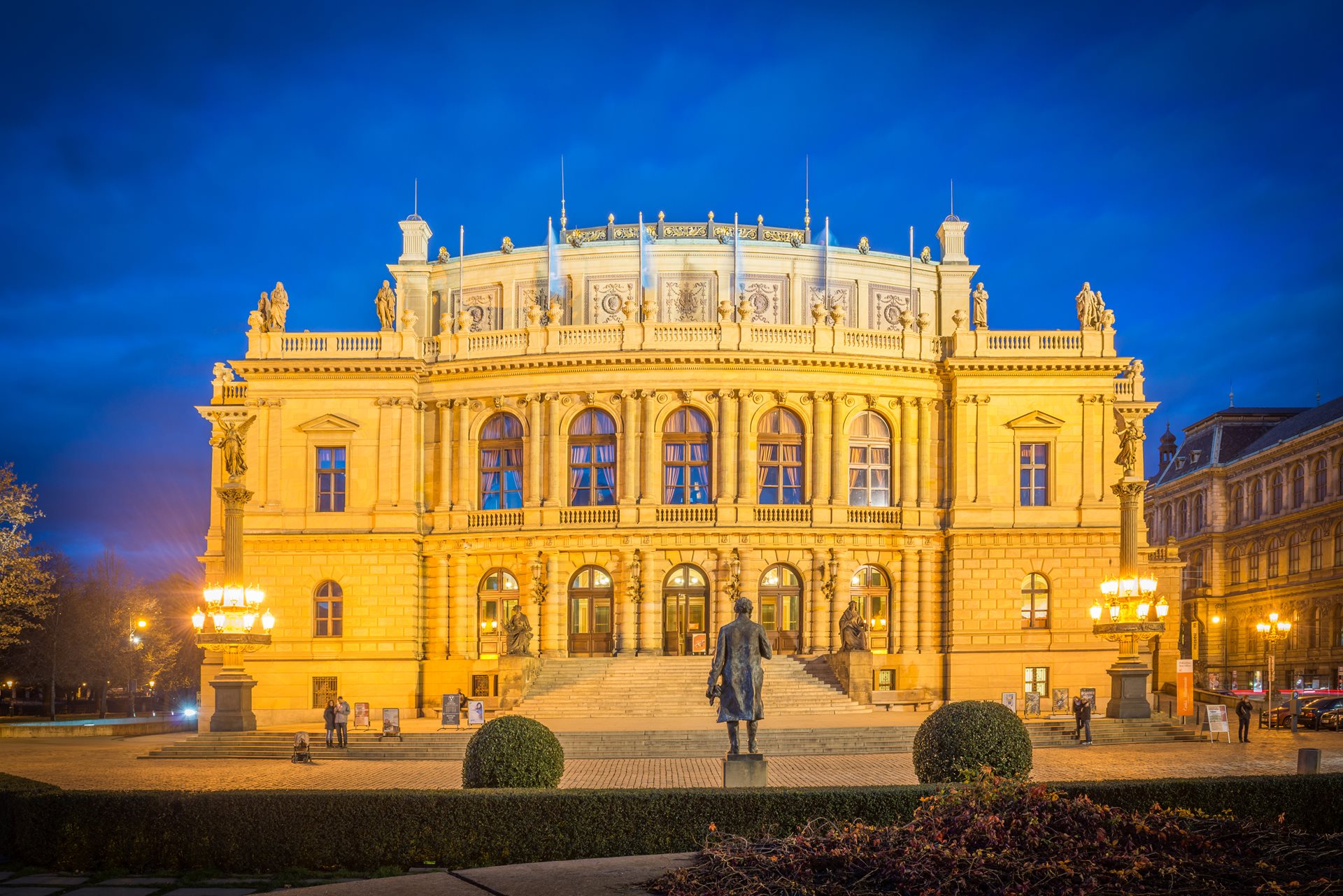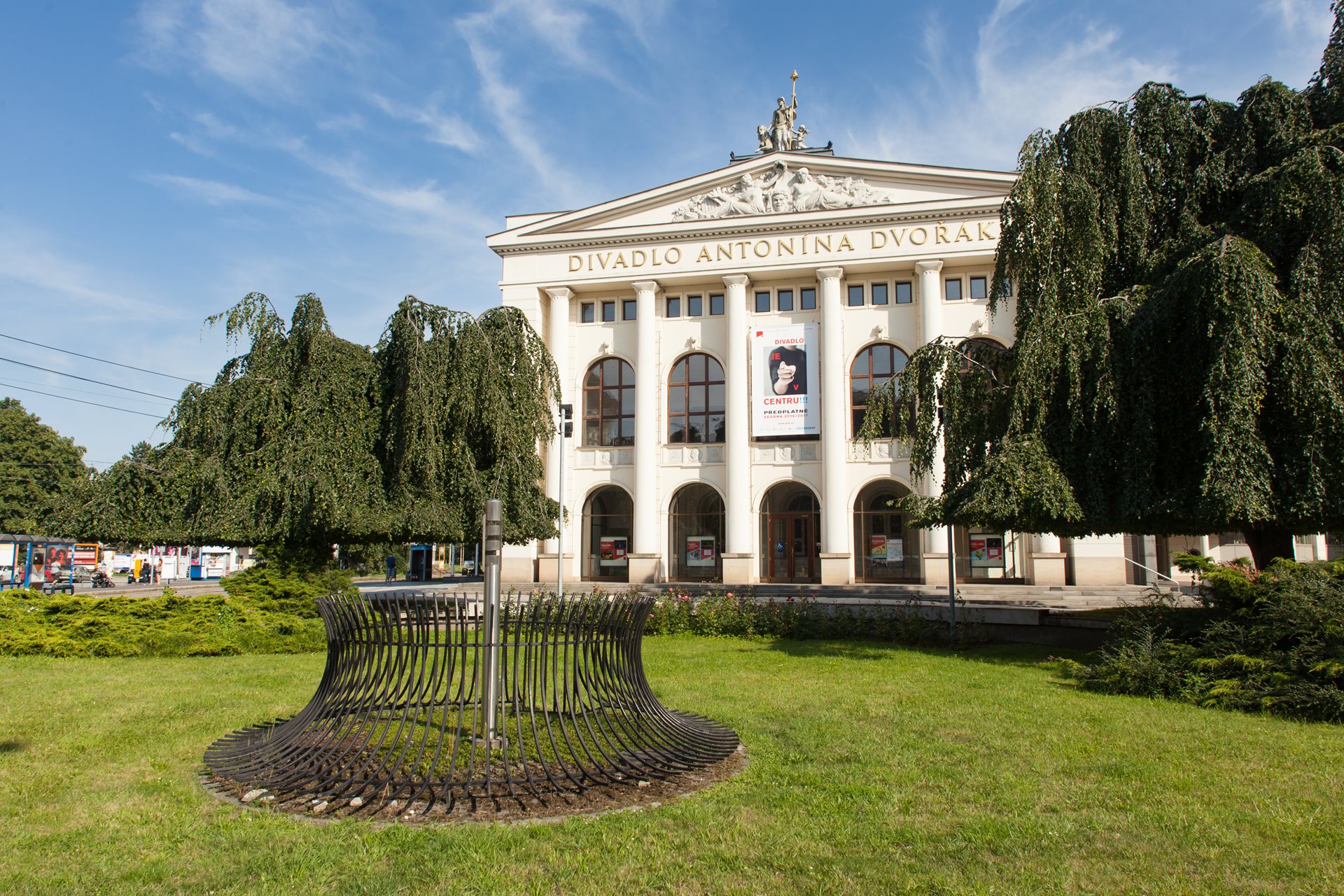Muses have been a symbol of art, beauty and creativity for centuries. We would like to invite you on a tour of places where muses continue to pass on beauty and art to viewers and listeners. A tour of opera and theatre stages across the Czech Republic.
The National Theatre Trio in Prague
The National Theatre in Prague includes several stages that are worth a visit. Each of them specialises in different performances and each has their own unique atmosphere. Would you like to see the National Theatre buildings when there is no performance and have a look behind the curtain? Individual or group tours of the buildings offer an interesting opportunity to visit the individual stages. They take place on weekends, reservation required, and you can also book an English-speaking guide.State Opera
The majestic building of the State Opera in Prague can be found near St. Wenceslas Square; its former grandeurs has been restored thanks to the recent general overhaul. The opera now looks just like it did when it first opened in 1888. The reconstruction restored its design full of golden elements, decorative carvings and luxurious textile wallpapers in the style of the end of the 19th century and beginning of the 20th century. However, the real jewel of the Neo-Rococo interiors is the painted ceilings and murals, besides the golden chandelier. And what shows can you see there? Mostly operas, such as La bohème, La Traviatta, The Flying Dutchman, or Tosca. In 2022, the Opera will also introduce Macbeth, Madame Butterfly, Rigoletto, Aida or the Swan Lake ballet. Simply said, the classic that never fails. Operas are performed in the original language, with English subtitles.
National Theatre Historical Building
The building of the National Theatre majestically looks down at the Vltava banks in the very centre of Prague. When it opened in 1883, it was one of the first theatres in Prague that performed in Czech, not in German. The grandiose landmark has an impressive interior with artworks by famous artists of the 19th century, including paintings and murals, bronze busts and sculptures, or lunette paintings and allegories. We will tell you a secret! When in the building, look up at the ceiling decorated with eight allegoric muses. They might look like murals, but they are actually oil paintings on canvas that were placed on the ceiling when the building was completed. Most of the performances in the historical building of the National Theatre are in Czech, but selected shows are offered with English subtitles. You can also see famous operas there, such as Rusalka, The Barber of Seville, The Jacobin, Turandot and Carmen. Sometimes, the ballet ensemble of the National Theatre performs there.
The Estates Theatre
The Estates Theatre, a Classicist building erected in 1783, has been preserved almost in its original form. The Estates Theatre became famous especially thanks to Wolfgang Amadeus Mozart. It is where he conducted The Marriage of Figaro in January 1787, and the Don Giovanni opera, dedicated by Mozart to the citizens of Prague, premièred in the Estates Theatre in the autumn of the same year. The year of 1834 is important for the Czechs. It is when the Fidlovačka play premièred, presenting the song Kde domov můj, the current national anthem of the Czech Republic. In 2022, you can visit the theatre to see popular Mozart’s operas, such as Così fan tutte, The Magic Flute, Don Giovanni or The Marriage of Figaro.
Rudolfinum in Prague
Rudolfinum, a famous Prague concert hall and the seat of the Czech Philharmonic Orchestra, which first performed there in 1896, led by Antonín Dvořák, first opened at the same time as the National Theatre. There are four concert halls, the largest one being Dvořák’s hall with excellent acoustics; moreover, you will find one of the best pipe organs in Central Europe there. Besides concerts, Rudolfinum is the venue of the annual music festival of the Prague Spring and you can also visit the Rudolfinum Gallery for contemporary art exhibitions. Are you curious about the backstage of the building and would you like to learn about its history and current operation? You can go on a tour through Rudolfinum guided by one of the Czech Philharmonic Orchestra members. You might even get to the roof, from which the view is breath-taking! Call in advance to book a tour on a workday in English.
Municipal House in Prague
The splendid Art Nouveau building of the Municipal House was erected in the place of a former royal court, at today’s Republic Square in the centre of Prague at the beginning of the 20th century. It was decorated by the best artists of its time: Mikoláš Aleš, Max Švabinský, František Ženíšek or Alfons Mucha. If you visit the house, you can admire the original mirrors, Art Nouveau fabrics or the colourful stained glass. Classical music concerts are performed in the Smetana Hall, the largest one in the building. There are also balls or exhibitions; you can currently visit the famous collection of Mucha’s work of the iMucha project. Commented tours of the Municipal House are regularly provided in English.
Mahen Theatre in Brno
The end of the 19th century was quite fruitful when it comes to the construction of theatres and concert halls. At that time, it was decided to build a hall of art and muses also in Moravian Brno. The auditorium ceiling is decorated with the allegories of tragedy, dance, lyric poetry, comedy, dance and music. Today’s Mahen Theatre was the first European theatre completely lit with electric bulbs when it was opened in 1882. And that was in a town without electricity, so a small power plant had to be built just for the needs of the theatre. The author of the electric lighting project, Thomas Alva Edison, visited Brno to see his work, which he managed remotely, twenty-five years later. A part of the original Edison’s electrical installation is now displayed at a small exposition in the foyer. Thanks to that, Mahen Theatre is now a technical monument. The theatre has an opera and ballet ensemble and this year, they will perform Aida, Carmina Burana or Eugene Onegin.
Antonín Dvořák Theatre in Ostrava
Today’s Antonín Dvořák Theatre first opened in 1907 and it was a theatre and concert stage for the quickly developing industrial centre of North Moravia. Viennese architect Alexander Graf designed the building in the Neo-Baroque style. It was decorated by many Czech and Viennese artists. The theatre is the home stage for the opera, drama, musical and ballet companies of the Moravian-Silesian National Theatre. Even though the building looks like a typical 19th century structure, it was constructed using modern methods. Unlike other theatres in the nearby towns, ferro-concrete beams and horizontal lintels were used in its construction. And what can you see there this year? Besides drama, you can see Nabucco, La Traviatta or Rusalka.






-(1).jpg?width=1920&height=1204&ext=.jpg)



